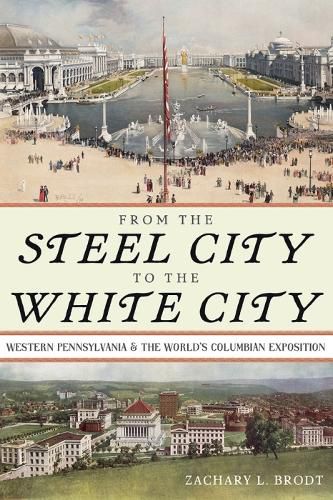Readings Newsletter
Become a Readings Member to make your shopping experience even easier.
Sign in or sign up for free!
You’re not far away from qualifying for FREE standard shipping within Australia
You’ve qualified for FREE standard shipping within Australia
The cart is loading…






In From the Steel City to the White City, Zachary Brodt explores Western Pennsylvania's representation at Chicago's Columbian Exposition, the first major step in demonstrating that Pittsburgh was more than simply America's crucible-it was also a region of developing culture and innovation. The 1893 Columbian Exposition presented a chance for the United States to prove to the world that it was an industrial giant ready to become a global superpower. At the same time, Pittsburgh, a commercial center that formerly served as a starting point for western expansion, found itself serving as a major transportation, and increasingly industrial, hub during this period of extensive growth. Natural resources like petroleum and coal allowed Western Pennsylvania to become one of the largest iron- and steel-producing regions in the world. The Chicago fairgrounds provided a lucrative opportunity for area companies not only to provide construction materials but to display the region's many products. While Pittsburgh's most famous contributions to the 1893 World's Fair-alternating current electricity and the Ferris wheel-had a lasting impact on the United States and the world, other exhibits provided a snapshot of the area's industries, natural resources, and inventions. The success of these exhibits, Brodt reveals, launched local companies into the twentieth century, ensuring a steady flow of work, money, and prestige.
$9.00 standard shipping within Australia
FREE standard shipping within Australia for orders over $100.00
Express & International shipping calculated at checkout
In From the Steel City to the White City, Zachary Brodt explores Western Pennsylvania's representation at Chicago's Columbian Exposition, the first major step in demonstrating that Pittsburgh was more than simply America's crucible-it was also a region of developing culture and innovation. The 1893 Columbian Exposition presented a chance for the United States to prove to the world that it was an industrial giant ready to become a global superpower. At the same time, Pittsburgh, a commercial center that formerly served as a starting point for western expansion, found itself serving as a major transportation, and increasingly industrial, hub during this period of extensive growth. Natural resources like petroleum and coal allowed Western Pennsylvania to become one of the largest iron- and steel-producing regions in the world. The Chicago fairgrounds provided a lucrative opportunity for area companies not only to provide construction materials but to display the region's many products. While Pittsburgh's most famous contributions to the 1893 World's Fair-alternating current electricity and the Ferris wheel-had a lasting impact on the United States and the world, other exhibits provided a snapshot of the area's industries, natural resources, and inventions. The success of these exhibits, Brodt reveals, launched local companies into the twentieth century, ensuring a steady flow of work, money, and prestige.